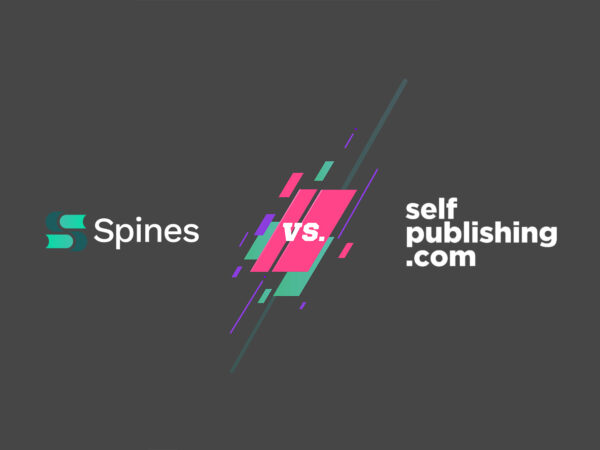Have you ever dreamed of sharing your love story with the world? Whether it’s a whirlwind romance, a slow-burn connection, or an unexpected twist, your story deserves to be read. If you’ve already written it, maybe it’s tucked away in a drawer or hidden in your laptop; you’ve taken the first step. Now, it’s time to share it with readers who are eager for their next great romance.
Self-publishing is revolutionizing the way love stories are told, offering authors more freedom and control than ever before. Gone are the days when you needed a traditional publisher to give the green light. Now, the power is in your hands to publish and connect with an audience hungry for your tale, whether it’s a steamy paranormal adventure or a heartwarming contemporary romance.
If you’re ready to turn your passion into a published masterpiece, let’s explore how you can make your romance novel come to life and find its perfect readers.
Crafting a Love Story That Captivates and Keeps Readers Hooked
Creating a captivating romance is all about developing strong characters, utilizing engaging tropes, and delivering an emotional payoff that keeps readers invested. Here’s how you can craft a love story that hooks your audience from start to finish:
Start with compelling characters. To make your characters feel real, give them flaws, quirks, and struggles that readers can relate to. Whether it’s intense attraction or a slow-burn connection, their chemistry should feel undeniable. As the story progresses, let your characters evolve, with their journey and growth driving the plot forward.
Next, leverage romance tropes. Classic tropes like “enemies to lovers,” “second chances,” and “forced proximity” never go out of style, but don’t be afraid to add your unique twist to keep things fresh. These tropes naturally create tension; use that to your advantage to build emotional moments that pull readers in.
Of course, romance readers expect a satisfying ending. Whether it’s a “happily ever after” or “happily for now,” make sure your readers feel emotionally fulfilled by the story’s resolution. A well-crafted conclusion is essential for leaving readers swooning.
Finally, balance tension and emotion. The best love stories build slow-burn tension, letting the romance grow and simmer over time. By doing so, you’ll deepen the emotional connection between your characters and the readers, keeping them invested in the journey from beginning to end.
By focusing on these elements, you’ll create a romance that readers can’t put down, one with unforgettable characters, compelling tropes, and an emotional payoff that keeps them coming back for more.
The Creative Freedom of Self-Publishing: Why It Works for Romance Authors
Self-publishing offers romance authors unparalleled creative freedom that traditional publishing simply can’t match. Here’s why self-publishing is the perfect fit for romance writers:
1. Full Creative Control
- Your story, your way: From character development to plot twists, you have complete control over your novel’s direction.
- No editorial restrictions: Unlike traditional publishers, you can write what you’re passionate about without compromise. Want to include a unique trope or niche subgenre? Go for it!
2. Faster Publishing Timelines
- No waiting on approvals: With self-publishing, the timeline is entirely in your hands. Once your manuscript is ready, you can publish it without delays or waiting for approval from agents or publishers.
- Release at your own pace: Whether you want to release one book a year or several, you can manage your publishing schedule to keep your readers engaged.
3. Higher Royalties and Earning Potential
- Keep more of the profits: Self-published authors typically earn higher royalties than their traditionally published counterparts. You control the pricing and keep a bigger share of each sale.
- Direct to readers: With platforms like Spines, you can sell directly to your audience without the middleman, maximizing your earnings.
4. Build Your Brand and Audience
- Personal connection with readers: Self-publishing allows you to interact with your readers directly through social media, email lists, and more. This fosters a loyal fan base that is excited for your next release.
- Create a unique brand: Your brand as a romance author can reflect your style, your voice, and your values without being dictated by a publisher’s agenda.
Self-publishing gives you the flexibility to write the love stories that are true to your vision, build a fanbase, and enjoy financial rewards, all while maintaining full creative control. It’s the perfect path for romance authors who want to shape their destiny.
Step-by-Step Guide to Publishing Your Romance Novel
Ready to bring your romance novel to life and share it with readers? Here’s a simple step-by-step guide to help you self-publish your book and make it the next romance bestseller.
1. Polish Your Manuscript
- Edit and revise: Once your manuscript is finished, it’s time to polish it. Go through it multiple times to check for grammar, structure, and pacing.
- Get feedback: Share your draft with beta readers or critique partners to gather insights and refine your work.
- Hire a professional editor: A professional editor can help elevate your manuscript, ensuring that it’s the best version of itself before publication.
2. Format Your Book for Ebook and Print
- Proper formatting is crucial: Ensure your book looks great across all devices and in print. Hire a formatter or use online tools to make sure everything from chapter titles to margins is aligned.
- Consider print and ebook versions: Don’t forget that you can publish both print-on-demand (POD) and digital versions to reach more readers.
3. Design a Cover That Sells
- A great cover grabs attention: In the romance genre, the cover is key to attracting readers. Invest time in creating a visually striking design that reflects the heart of your story.
- Focus on genre-appropriate design: Romance covers should evoke emotion, whether it’s a steamy couple or a soft, whimsical design. Make sure your cover speaks to your target audience.
4. Choose Your Publishing Platform
- Research your options: There are various platforms for self-publishing, including Kindle Direct Publishing (KDP), Spines, and more. Consider your goals, audience, and platform features before making your choice.
- Set your pricing: Determine how much you want to charge for your book. Remember, pricing can affect your sales, so make sure it aligns with your book’s value and audience.
5. Marketing Your Book
- Build a marketing plan: Before your book launches, set up a marketing strategy. This includes creating a website, building an email list, and reaching out to influencers or book bloggers.
- Social media: Use platforms like Instagram, TikTok, and Pinterest to engage with your audience, share teasers, and promote your book.
6. Launch and Promote
- Prepare for launch day: Plan a big launch day to create buzz. Use pre-orders, giveaways, and social media posts to drive excitement.
- Keep engaging with readers: After your book is out, continue marketing through emails, promotions, and author events. Keep the momentum going!
With this step-by-step guide, you’ll be well on your way to successfully publishing and marketing your romance novel. By focusing on these key steps, you’ll not only get your book into readers’ hands but also set yourself up for long-term success as a romance author.
Marketing Your Romance Novel & Building Your Author Brand
Once your romance novel is published, the real work begins, getting it into the hands of readers. Effective marketing and establishing a strong author brand are crucial to your success. Here’s how to market your book effectively and build a brand that resonates with your audience:
1. Engage with Readers on Social Media
Social media platforms like Instagram, TikTok, and Pinterest are essential for promoting your romance novel. These platforms allow you to share visually appealing content such as book covers, teaser quotes, or character illustrations that attract potential readers.
- Interact with your followers: Respond to comments, ask questions, and actively engage in conversations with your readers. This helps foster a sense of community and loyalty.
- Participate in trends: Jump on current trends or viral challenges related to romance or books, particularly on TikTok (#BookTok). It’s an easy way to increase visibility and attract readers who share similar interests.
Use relevant hashtags like #RomanceBooks, #RomanceReaders, and #BookTok to ensure your content reaches the right audience. Engaging with other authors and readers by participating in tag games or challenges can also help you get discovered.
2. Build and Nurture an Email List
Building an email list is one of the most powerful tools for engaging with readers. By offering something valuable, like a free short story, the first chapter of your book, or exclusive content, you can entice readers to sign up and start building your list.
- Send regular updates: Use your email list to keep readers engaged with updates about new releases, book promotions, and even sneak peeks of upcoming projects. Regular communication builds anticipation and keeps your readers excited for what’s next.
- Offer exclusive content: Provide your subscribers with early access to new books, bonus chapters, or content that isn’t available anywhere else. This makes your email list feel exclusive and valuable, encouraging readers to stay subscribed.
3. Collaborate with Romance Bloggers and Authors
Reaching out to bloggers, influencers, and fellow authors can greatly expand your book’s reach. Romance bloggers are often looking for new books to review and promote, and their followers are highly engaged.
- Request reviews: Reach out to romance book bloggers to request reviews for your book. A positive review from a respected blogger can lead to more exposure and credibility.
- Cross-promote with authors: Partner with other authors in your genre to promote each other’s books. You can swap guest blog posts, share each other’s work on social media, or do joint giveaways to expand both your audiences.
4. Price Your Book Strategically
Setting the right price for your book is crucial for attracting readers while also maximizing your earnings. Consider pricing strategies like offering discounts or bundling your book with other titles to increase sales.
- Run limited-time promotions: Discounting your book for a limited time can create urgency and drive sales. Consider offering a lower price during a book launch or a special event like holidays or Romance Awareness Month.
- Bundle your books: If you’ve written a series or multiple books in the same genre, consider bundling them together at a discounted price. Romance readers love binge-reading, so offering a collection of books can encourage new readers to buy multiple titles.
5. Develop a Professional Author Website
Your website is your digital storefront, and it should serve as the central hub for everything related to your author brand. Make sure it’s user-friendly, visually appealing, and regularly updated.
- Showcase your books: Feature your books front and center with clear links to purchase them. Include book descriptions, cover art, and excerpts to entice readers.
- Build your mailing list: Include an easy-to-find email sign-up form to grow your mailing list. This is crucial for maintaining direct communication with your readers.
- Include author bio and blog: Share your writing journey, personal stories, or insights into the romance genre. Engaging content on your blog or website can help build a deeper connection with readers.
6. Consistency in Branding
Building a consistent brand helps readers instantly recognize your work and keeps your content professional and cohesive. From your website and social media to your book covers, everything should reflect your unique author brand.
- Release books regularly: A consistent release schedule helps maintain momentum and keeps readers engaged. Whether it’s one book a year or multiple, establish a schedule that works for you and stick to it.
- Uniform branding: Your book covers, website design, and social media should all reflect the same aesthetic and tone. This consistency helps solidify your identity as an author and makes you more recognizable to readers.
7. Leverage Reader Reviews and Testimonials
Reviews are essential for building credibility and attracting new readers. Positive feedback from readers not only helps increase sales but also strengthens your reputation as an author.
- Encourage reviews: Prompt readers to leave reviews on platforms like Amazon and Goodreads. The more reviews you have, the more visible your book will be to potential readers.
- Use testimonials: Highlight positive reviews on your website and marketing materials. Social proof is a powerful tool that helps convince hesitant readers to take a chance on your book.
By combining smart marketing strategies with a strong, consistent author brand, you’ll connect with your readers and create a lasting relationship that will have them eagerly awaiting your next book.
Self-Publishing vs. Traditional Publishing: Which Path is Right for You?
When it comes to publishing your romance novel, you have two main options: self-publishing or traditional publishing. Here’s a quick comparison to help you decide which path aligns with your goals.
Creative Control
- Self-publishing: You control every aspect of your book, from content to cover design and marketing.
- Traditional publishing: Many creative decisions, like cover design and edits, are handled by the publisher.
Speed to Market
- Self-publishing: You can publish quickly, often within days or weeks.
- Traditional publishing: The process can take months or even years due to editorial and design timelines.
Royalties and Earnings
- Self-publishing: You keep a larger share of the royalties (60-70%).
- Traditional publishing: Publishers take a significant cut, leaving you with a smaller percentage (10-15%).
Marketing and Exposure
- Self-publishing: Marketing is your responsibility, but you have the freedom to experiment with strategies.
- Traditional publishing: Publishers handle marketing, but the support may be limited, especially for newer authors.
Long-Term Career Growth
- Self-publishing: You build your brand and audience, with the flexibility to release books on your schedule.
- Traditional publishing: Publishers offer broader exposure, but you may have less control over your career path.
Which Path is Right for You?
Self-publishing offers freedom, higher royalties, and control, but requires more work. It’s ideal for authors who want creative independence and are willing to manage the marketing. Traditional publishing provides professional support and wider exposure, but offers less control over your work. It’s a good fit if you prefer structure and have the patience for a longer timeline.
Ultimately, both paths can lead to success; choose the one that best aligns with your personal goals and vision.
Your Romance Novel’s Journey: From Dream to Bestseller
Publishing a romance novel is just the beginning of an exciting journey. With the right strategies, dedication, and passion, you can turn your story into a must-read for romance lovers everywhere. By crafting unforgettable characters, embracing the creative freedom of self-publishing, and building a strong, consistent author brand, you’ll not only captivate readers but also carve out your space in the thriving world of romance fiction.
Marketing your book and engaging with your audience will keep the momentum going, ensuring that each new release reaches the right readers. Whether you choose self-publishing or traditional publishing, the path you take should reflect your goals and the love story you’re eager to share with the world.
Remember, every great romance novel has a happily ever after; yours can too. So take the leap, write with heart, and get your book into the hands of readers who will fall in love with your story, one page at a time. The world is waiting for your romance novel, and the adventure is just beginning.








